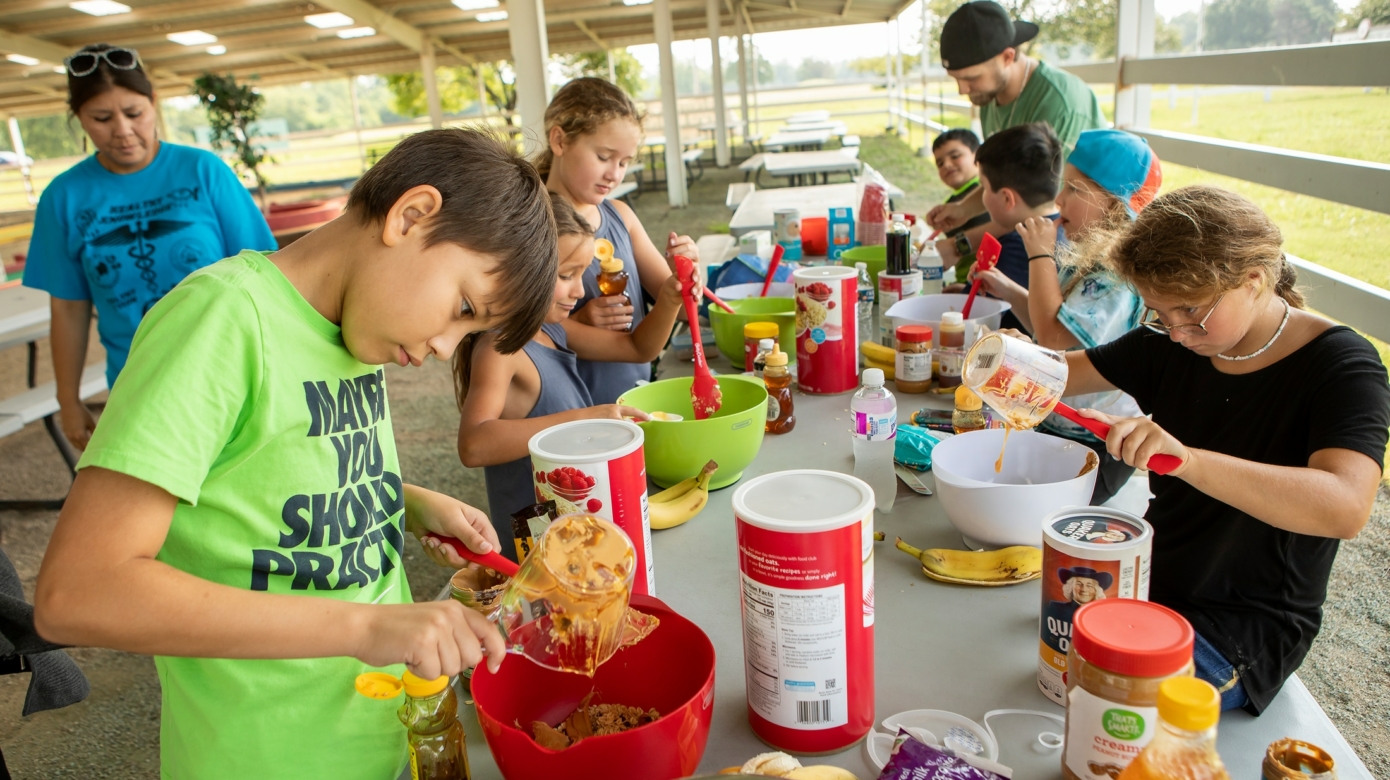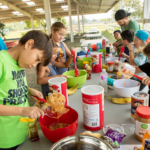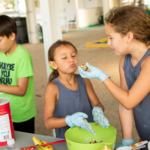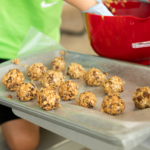The Citizen Potawatomi Nation’s Workforce Development & Social Services department recently wrapped up a busy summer full of activities to help youth learn and participate in their Native heritage and build professional skills. Outreach programs included a V-STEM camp, book club, law and policy, work placements and more.
V-STEM
Although the ongoing coronavirus pandemic hindered the department’s ability to implement in person activities for every initiative, staff found creative ways to keep youth engaged. A partnership with the American Indian Science and Engineering Society provided the foundation for CPN to offer an immersive, virtual STEM camp again this year. Students across eight weeks dove into science, technology, engineering and math-related subjects tied to Indigenous teachings and backgrounds.
“We covered star knowledge, water science, animal biology, geometry, and more, and we brought in other departments from across CPN to present,” said Ariana Hurst, youth coordinator.
The camp reached approximately 80 students through its virtual sessions and in-person activities organized by the CPN Child Development Center.
“We have gotten a great reaction from them,” she said. “They seem to have really enjoyed it.”
Book club
Social Services Counselor Kym Coe and Assistant Counselor Nicole Byrd, led a month-long book club for local Johnson O’Malley participants and families. During the four weeks, they read CPN member Robin Wall Kimmerer’s Gathering Moss and Braiding Sweetgrass: Indigenous Wisdom, Scientific Knowledge, and the Teaching of Plants as well as Edward Benton-Banai’s The Mishomis Book: The Voice of the Ojibway.
“It is an honor to be able to help families who have such a rich history to connect to their past in such a beautiful way. But more than that, I love knowing that the families are spending time together, reading and learning about their culture together,” Byrd said.
Byrd drafted questions for students to answer, and they received incentives for completing the tasks.
“Our main goals with the book club are to encourage reading, teach the kids about their culture, and to also encourage families to read together,” she said.
Although the club ended on Aug. 2, students were able to keep the books.
“For me personally, I am so happy that I could run this book club. I have always loved reading … and as an avid reader, I have always loved that I can connect to history through an author’s experiences. And now, I can share that with our youth,” Byrd said.
Law
Workforce Development & Social Services partnered with nearby higher-educational institutions over three weeks, introducing students in grades 7 through 12 to potential legal careers through its Law & Policy Camp.
“They had really great law-related discussions, and in the last week, they got to meet in-person to do their own mock trial,” Hurst said.
Workforce supplied legal portfolios and helped the students purchase professional, court-room appropriate clothing.
During the mock trial sessions, “I personally thought the younger kids would be more reserved and not as outspoken, but we had one girl who wanted to be the defense attorney, and she took her role very seriously in court,” Hurst said.
At the end of the programming, students traveled to East Central University in Ada for a campus tour where they met with professors and learned more about the university’s degree options.
“Everybody really seemed to enjoy themselves, and it was cool just getting to see everyone interacting together in person versus over Zoom,” she said.
Work placements
In addition to camps over the summer break, staff assisted area youth ages 16 to 24 with finding short-term jobs to help them define potential career goals.
“The program is a way to get their foot in the door,” said Achaia Powis, youth counselor.
Students can work up to 120 hours at locations within and outside of CPN.
“We try to place them with something that they’re really interested in going to school for after they graduate, so we have partnerships with vet clinics, physical therapy offices and things like that,” she said.
Staff strive to identify potential hurdles to participants’ success to make the placement as beneficial and educational as possible.
“Let’s say they work somewhere where they need scrubs or professional office attire — we help them with that,” Powis said.
Health and culture
Youth also had an opportunity to participate in a Fresh Fitness Camp and tour the Cultural Heritage Center and CPN Eagle Aviary.
“The Fresh Fitness Camp was for kids ages 7 to 12 and occurred every Tuesday and Thursday in July,” said Kristen Casteel, JOM intern. “On Tuesdays, they exercised with trainers from the Wellness Center and took part in arts and crafts.”
Twelve students attended a Cultural Heritage Center tour led by Blake Norton, CHC curator, and afterward, enjoyed watching The Playground of the Native Son and food from FireLake Fry Bread Taco. Another group of students learned about the aviary’s work to provide a permanent home for injured eagles that cannot return to the wild through an on-site tour.
Staff enjoyed the opportunity the department’s summer outreach provided to keep youth engaged, especially while the coronavirus pandemic created fewer opportunities for students to attend regular, in-person camps and sessions. It also allowed participants to become more acquainted with local resources.
“We hope we helped give them a greater sense of their identity and their community. They might not realize that there are other people out there who really do want to see them succeed, and we have great resources here and we would love for them to take advantage of that,” Powis said.
Learn more about CPN Workforce Development & Social Services at cpn.news/workforce.




